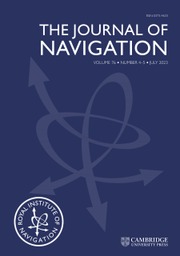Article contents
Maritime accidents-based optimal rescue ship location using dynamic programming and particle swarm optimisation algorithm
Published online by Cambridge University Press: 12 March 2025
Abstract
This study describes an optimal method for deploying rescue ships in response to marine accidents using dynamic programming and particle swarm optimisation in an archipelago. We solved the shortest distance problem from a rescue ship to a marine accident using dynamic programming, which avoids obstacles, such as land or aquacultures. The optimal location problem is NP-hard. However, the optimal locations were found to be efficient among the various candidate combinations using particle swarm optimisation. We compared two models based on the set covering location model (SCLM) and P-median model (PMM). The PMM outperformed the SCLM approach in the test. The findings of this study may be valuable for directing judgments regarding search and rescue (SAR) vessel placements to maximise resource utilisation efficiency and service quality. Furthermore, this process can flexibly arrange multiple rescue ships.
Information
- Type
- Research Article
- Information
- Copyright
- Copyright © The Author(s), 2025. Published by Cambridge University Press on behalf of The Royal Institute of Navigation
References
- 1
- Cited by


